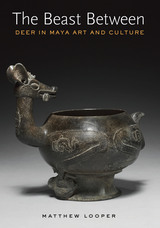
The first book to focus on the multifaceted images of deer and hunting in ancient Maya art, from the award-winning author of To Be Like Gods: Dance in Ancient Maya Civilization.
Winner, CHOICE Outstanding Academic Title, 2019
The white-tailed deer had a prominent status in Maya civilization: it was the most important wild-animal food source at many inland Maya sites and also functioned as a major ceremonial symbol. Offering an in-depth semantic analysis of this imagery, The Beast Between considers iconography, hieroglyphic texts, mythological discourses, and ritual narratives to translate the significance and meaning of the vibrant metaphors expressed in a variety of artifacts depicting deer and hunting.
Charting the importance of deer as a key component of the Maya diet, especially for elites, and analyzing the coupling of deer and maize in the Maya worldview, The Beast Between reveals a close and long-term interdependence between the Maya and these animals. Not only are deer depicted naturalistically in hunting and ritual scenes, but also they are assigned human attributes. This rich imagery reflects the many ways in which deer hunting was linked to status, sexuality, and war as part of a deeper process to ensure the regeneration of both agriculture and ancestry. Drawing on methodologies of art history, archaeology, and ethnology, this illuminating work is poised to become a key resource for multiple fields.
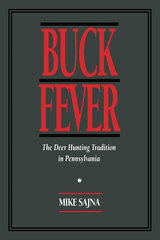
Every fall close to one million hunters enter Pennsylvania’s forests and mountains in quest of the white-tailed deer. Some are seeking sport and companionship; others are stocking their larders for winter; many are conservationists who regard hunting as the most humane way of reducing overpopulated deer herds. They all face the increasing activism of animal rights advocates who are opposed to hunting in principle and who frequently picket and harass hunters.
This controversial subject is explored in depth by Mike Sajna, the outdoors columnist for Pittsburgh Magazine and a twenty-year veteran of Pennsylvania’s “pumpkin army,” the orange-clad throng that invades the woods every season. To explain the ethos and traditions of hunting he takes the reader to a typical deer camp in Warren County, in the rugged terrain of the Allegheny High Plateau. Starting with the trek north from their homes around Pittsburgh, he captures the sights and sounds, thoughts and feelings of three generations of hunters. With humor, affection, and insight he recounts the hunting lore, the camaraderie, the physical testing that make deer camp a unique experience.
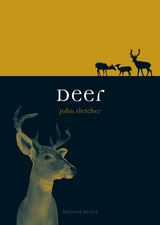
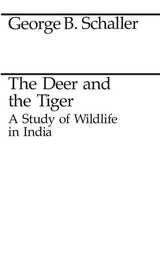
"This book is a treasure house of biological information and it is also a delight to read. . . . Excellent phoographs accompany the text."—Robert K. Enders, American Scientist
"The one book that has been my greatest source of inspiration is The Deer and the Tiger by George Schaller, based on the first ever scientific field study of the tiger. . . . This book is written by a scientist, but speaks from the heart. . . . It reveals startling information on feeding habitats, territorial behaviour, and the nuances that make up the language of the forest; you become totally immersed in the world of the tiger. . . . For all of us who work in tiger conservation, this book is the bible."—Valmik Thapar, BBC Wildlife
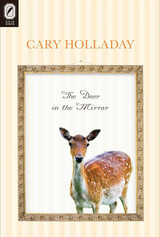
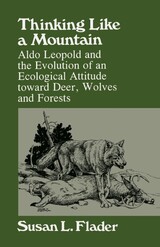
When initially published more than twenty years ago, Thinking Like a Mountain was the first of a handful of efforts to capture the work and thought of America's most significant environmental thinker, Aldo Leopold. This new edition of Susan Flader's masterful account of Leopold's philosophical journey, including a new preface reviewing recent Leopold scholarship, makes this classic case study available again and brings much-deserved attention to the continuing influence and importance of Leopold today.
Thinking Like a Mountain unfolds with Flader's close analysis of Leopold's essay of the same title, which explores issues of predation by studying the interrelationships between deer, wolves, and forests. Flader shows how his approach to wildlife management and species preservation evolved from his experiences restoring the deer population in the Southwestern United States, his study of the German system of forest and wildlife management, and his efforts to combat the overpopulation of deer in Wisconsin. His own intellectual development parallels the formation of the conservation movement, reflecting his struggle to understand the relationship between the land and its human and animal inhabitants.
Drawing from the entire corpus of Leopold's works, including published and unpublished writing, correspondence, field notes, and journals, Flader places Leopold in his historical context. In addition, a biographical sketch draws on personal interviews with family, friends, and colleagues to illuminate his many roles as scientist, philosopher, citizen, policy maker, and teacher. Flader's insight and profound appreciation of the issues make Thinking Like a Mountain a standard source for readers interested in Leopold scholarship and the development of ecology and conservation in the twentieth century.
READERS
Browse our collection.
PUBLISHERS
See BiblioVault's publisher services.
STUDENT SERVICES
Files for college accessibility offices.
UChicago Accessibility Resources
home | accessibility | search | about | contact us
BiblioVault ® 2001 - 2024
The University of Chicago Press









